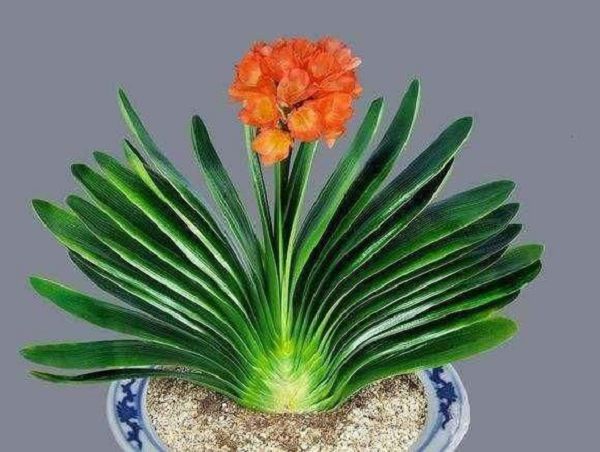When does rabbit ear orchid blossom? What month is the flowering period of rabbit ear orchid?

Rabbit ear orchid: semi-epiphyte, pseudobulb subflattened cylindrical or narrowly fusiform, articulate, more or less bare, apical aggregation of 2-4 leaves, leaves oblanceolate-oblong to narrowly elliptic, petiole 3-18 cm long, scape from the lower lateral nodes of the pseudobulb, erect, inflorescences with 2-6 flowers. So when does the rabbit ear orchid blossom? What month is the flowering period of rabbit ear orchid?
According to the understanding of rabbit ear orchid growers, the flowering period of rabbit ear orchid is from May to August.
Habitat of producing area
Born on rocks, trees or ground under sparse forests, bamboo forests, forest margins, broad-leaved forests or valleys, 300-2200 m above sea level. Produced in southern Zhejiang, Fujian, Taiwan, southern Hunan, Guangdong, Hainan, Guangxi, southern Sichuan, Guizhou, Yunnan and southeastern Xizang. It is distributed from the Himalayas to Southeast Asia, as well as southern Japan and New Guinea. The type specimens were collected from Nepal.
Growth habit
Orchids generally grow on the hillside and valley walls of deep mountain valleys, sloping slopes or stone gaps with good water permeability and water retention, next to sparse mountain grass, and shaded by secondary trees. Or a place with shade, short sunshine or only scattered stars. Places with high humidity and good air circulation are sometimes born on the cliffs of mountains and streams.
Orchids should be planted in a ventilated environment. Sex likes yin, avoid direct sunlight, like moist, avoid dryness, 15 ℃ to 30 ℃ is the most suitable for growth. The growth was poor above 35 ℃. The severe cold below 5 ℃ will affect its growth, at this time, orchids are often in a dormant state. If the temperature is too high and the sun is exposed, the leaves will burn or scorch within a day or two. If the temperature is too low and it is not transferred into the house in time, frostbite will occur.
Orchid is a fleshy root, suitable for the use of sandy loam rich in humus, drainage performance must be good, humus soil or mountain soil with more humus should be selected. The pH value of slightly acidic loose soil or iron-containing soil should be 5.5-6.5.
Mode of reproduction
Ramet
It can be carried out in both spring and autumn, usually every three years. All plants with dense pseudocorms can be ramified, and at least 5 connected pseudocorms should be preserved in each clump. Irrigation should be reduced before splitting, so that the basin soil is better than. When putting on the basin after ramet, first cover the bottom hole of the basin with broken tiles, then cover with coarse stones, occupy the depth of the basin from 5 to 1, and then put coarse-grained soil and a small amount of fine soil, and then plant it with sandy loam rich in humus. Planting depth to the false bulb just buried in the soil strength, the edge of the basin left 2 cm along the mouth, covered with green cloud grass or fine stones, and finally watered thoroughly, placed in the shade for 10-15 days, keep the soil moist, gradually reduce watering, and carry out normal maintenance.
Sowing seeds
The orchid seed is very fine, there is only one underdeveloped embryo in the seed, the germination power is very low, and the seed coat is not easy to absorb water, so it can not germinate by conventional sowing, so it needs to use orchid or artificial medium to supply nutrients in order to germinate. It is best to sow the uncracked fruit, sterilize the surface with 75% alcohol, take out the seed, soak it with 10% sodium hypochlorite for 5-10 minutes, take out and rinse it with sterile water for 3 times, then sow it in a culture flask containing the culture medium, and then place it in a dark culture room. the temperature is kept at about 25C, and then moved to the light after germination to form a protocorm. It takes half a year to a year from sowing to transplanting. Tissue culture has been successful, and this method can be used to propagate where possible.
Related
- Is the orchid suitable for indoor use? Is it good for the body?
- How to prevent the empty root of orchids?
- What to do after the crab claw orchid is withered?
- Why are the leaves of orchids always yellow? Fertilizing and watering.
- Can the root of the gentleman orchid be saved if it is rotten?
- Diagnosis and treatment of cotton-blowing beetle insects in Cymbidium
- There is a way for a gentleman's orchid to rot.
- What is the most suitable temperature and humidity for the orchid?
- How to raise a gentleman's orchid? Cultivation techniques of Cymbidium
- How to prepare the nutritive soil for the cultivation of Cymbidium



